-
-
 Cardiology
Cardiology
-
 Clinical Oncology
Clinical Oncology
-
 Dental
Dental
-
 Dermatology
Dermatology
-
 Ear, Nose, Throat (ENT)
Ear, Nose, Throat (ENT)
-
 Endocrinology
Endocrinology
-
 Gastroenterology
Gastroenterology
-
 General Surgery
General Surgery
-
 Gynecology & Obstetrics
Gynecology & Obstetrics
-
 Interventional Cardiology
Interventional Cardiology
-
 Nephrology
Nephrology
-
 Neurology
Neurology
-
 Oncology Surgery
Oncology Surgery
-
 Ophthalmology
Ophthalmology
-
 Orthopedics
Orthopedics
-
 Pediatrics
Pediatrics
-
 Pediatrics Surgery
Pediatrics Surgery
-
 Physiotherapy
Physiotherapy
-
 Plastic Surgery
Plastic Surgery
-
 Psychiatry & Psychology
Psychiatry & Psychology
-
 Radiology
Radiology
-
 Urology
Urology
-
 Vascular Surgery
Vascular Surgery
-
Physics Lab in School: Cultivating Scientific Inquiry and Exploration
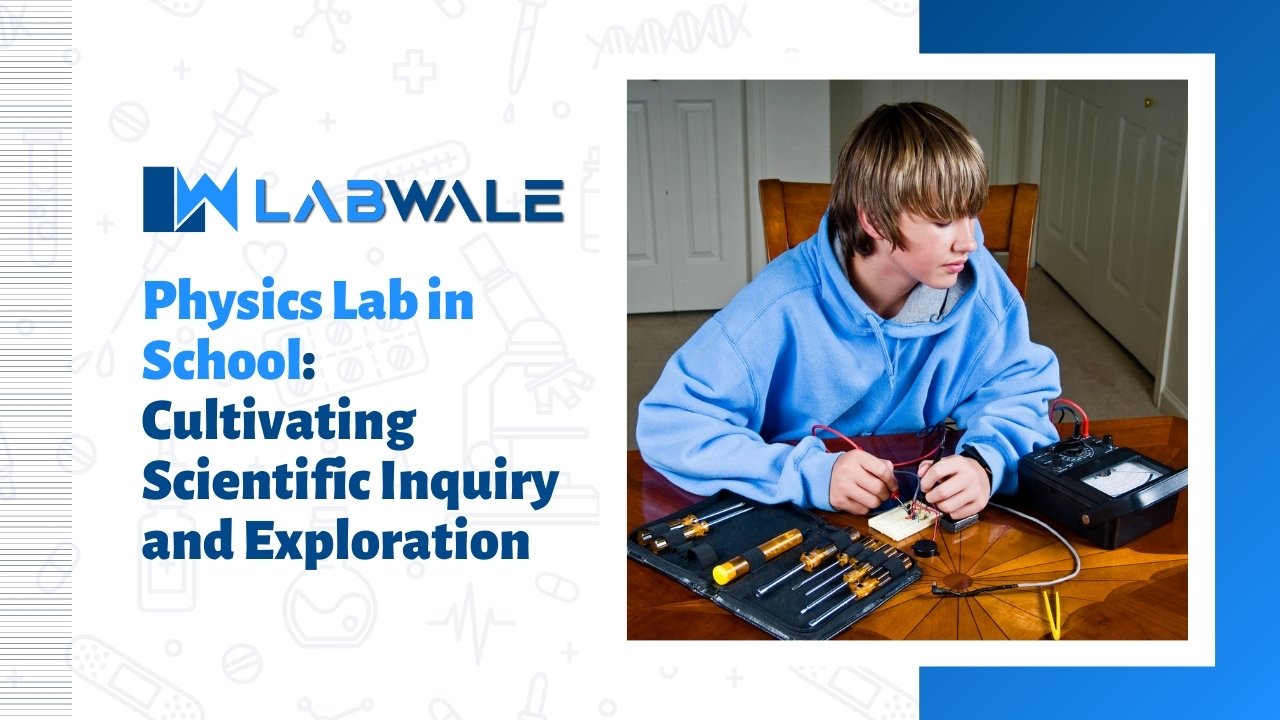
Contents
- Importance of Physics Labs in Modern School Education
- Role of Practical Learning in Understanding Physics Concepts
- How Physics Laboratories Encourage Scientific
- Curiosity Linking Classroom Theory with Real-World Applications
- Development of Critical Thinking Through Physics Experiments
- Enhancing Problem-Solving Skills in School Students
- Building Observation and Analytical Skills in Young Learners
- Hands-On Experiments: The Foundation of Conceptual Clarity
- Safety Standards and Best Practices in School Physics Labs
- Essential Equipment Found in a School Physics Laboratory
- Borosilicate Glass Beaker (500 ML)
- Borosilicate Graduated Cylinder (100 ML)
- Borosilicate Graduated Cylinder (250 ML)
- Borosilicate Graduated Cylinder (500 ML)
- Leclanche Cell Pot
- Lime Water (500 ml)
- Lycopodium Powder (250 gm)
- Magnesium Ribbon
- Mercury Metal Double Distilled (25 gm)
- Tripod (4 INCHES)
- Watch Glass (100 MM)
- Watch Glass (150 mm)
- How Physics Labs Support STEM Education Goals
- Encouraging Teamwork and Collaborative Learning
- Role of Teachers and Lab Instructors in Physics Experiments
- Assessment and Evaluation Through Practical Experiments
- Impact of Well-Equipped Labs on Student Performance
- Integrating Technology and Digital Tools in Physics Labs
- Physics Labs and Their Contribution to Career Readiness
- Promoting Innovation and Experimentation at School Level
- Challenges Faced in Managing School Physics Laboratories
- Solutions to Improve Accessibility and Effectiveness of Physics Labs
- Future of Physics Laboratories in School Education
- Why Every School Needs a Dedicated Physics Laboratory
- Frequently Asked Questions Physics Lab in School
Imagine a world where students don’t just memorize formulas and theories but actively engage in discovering the wonders of physics. A well-equipped physics lab transforms this vision into reality, igniting curiosity and fostering a love for science among young learners. It becomes more than just an extension of the classroom; it’s a vibrant space for experimentation, collaboration, and innovation.
In today’s fast-paced educational landscape, where rote learning often takes center stage, physics laboratories offer an essential balance. They provide hands-on experiences that deepen understanding and inspire students to ask questions about the universe around them. With every experiment conducted under its roof, a school physics lab cultivates scientific inquiry while linking theoretical concepts to real-world applications.
As we delve deeper into the significance of these laboratories in modern education, let us explore how they nurture critical thinking skills, enhance problem-solving abilities, and prepare our future scientists for the challenges ahead. Join us on this journey through the fascinating world of school physics labs!
Importance of Physics Labs in Modern School Education
Physics labs serve as the heart of scientific exploration in modern education. They offer a dynamic environment where students transition from theoretical learning to practical application. This hands-on experience is crucial for grasping complex concepts.
In these labs, students are not mere spectators; they become active participants in their learning journey. Experimentation sparks enthusiasm and fosters a deeper understanding of physical laws and principles.
Moreover, physics laboratories promote an inquiry-based approach to education. Students learn to formulate hypotheses, conduct experiments, and analyze results—skills that extend beyond the classroom into everyday life.
Additionally, well-equipped labs contribute significantly to student engagement and motivation. When learners can visualize theories through tangible experiments, they develop a sense of ownership over their education.
This interactive setting also prepares them for future challenges in STEM fields by nurturing essential skills like critical thinking and problem-solving right from an early age.
Role of Practical Learning in Understanding Physics Concepts
Practical learning transforms abstract physics theories into tangible experiences. When students engage in hands-on experiments, they witness the laws of motion and energy firsthand. This real-world connection reinforces theoretical knowledge.
By conducting experiments, learners can visualize concepts such as gravity or electromagnetism. They don’t just memorize formulas; they see how these principles play out in controlled settings.
Mistakes made during practical sessions are invaluable teaching moments. Students learn to troubleshoot and adapt their approaches, deepening their understanding of scientific inquiry.
Moreover, this interactive approach caters to various learning styles. Visual learners benefit from seeing concepts in action, while kinesthetic learners thrive through movement and manipulation of equipment.
The excitement generated by practical activities fosters a love for science that purely theoretical classes often lack. Engaging directly with materials ignites curiosity and motivates further exploration into the world of physics.
How Physics Laboratories Encourage Scientific
Physics laboratories serve as a vibrant space for scientific exploration. Here, students engage with theories they encounter in textbooks, transforming abstract concepts into tangible experiences.
Hands-on experiments ignite curiosity and foster a deeper understanding of the physical world. Students become active participants rather than passive recipients of information. They learn to ask questions, hypothesize outcomes, and test their ideas through experimentation.
This environment nurtures an inquisitive mindset essential for scientific inquiry. Each lab session presents opportunities to explore variables, collect data, and analyze results—all fundamental components of the scientific method.
Furthermore, working in labs encourages collaboration among peers. Group projects enable students to share insights and challenge each other’s thinking while honing communication skills vital for future careers in science or technology fields.
Curiosity Linking Classroom Theory with Real-World Applications
Curiosity drives the quest for knowledge. In a physics lab, students transform abstract theories into tangible experiences.
When learners engage with real-world applications, they see how concepts like force and motion manifest in everyday life. A simple experiment using rolling objects can illustrate friction’s impact on speed.
Connecting classroom lessons to practical scenarios ignites excitement. Students might explore energy transfer through hands-on projects, like building a solar cooker or designing paper rockets. Each task encourages them to ask questions and seek answers beyond textbooks.
This exploration fosters deeper understanding. It cultivates an inquisitive mindset where students are not just passive recipients of information but active participants in their learning journey. They become empowered to investigate further, bridging gaps between theory and practice in meaningful ways.
Development of Critical Thinking Through Physics Experiments
Engaging in physics experiments can significantly enhance critical thinking skills among students. These hands-on experiences challenge learners to analyze data, draw conclusions, and consider various outcomes.
When faced with unexpected results, students must reevaluate their hypotheses and adapt their strategies. This process fosters a mindset of inquiry that goes beyond rote memorization. It encourages deeper engagement with the subject.
Moreover, experimenting allows for exploration of concepts like force, motion, and energy through real-world scenarios. Students learn to ask questions such as “What happens if…?” or “Why did this occur?” Such inquiries promote a more profound understanding of scientific principles.
Through collaborative projects and discussions around lab findings, students also refine their ability to articulate thoughts clearly. They develop the confidence needed to present ideas and defend arguments based on experimental evidence.
Enhancing Problem-Solving Skills in School Students
Physics labs serve as a dynamic environment for students to enhance their problem-solving skills. By engaging with hands-on experiments, learners confront real-world challenges that require thoughtful solutions.
In these labs, students design experiments and analyze data. They must think critically about the variables affecting outcomes. This process fosters resilience as they learn to troubleshoot issues when results don’t align with expectations.
Collaborative projects further sharpen these skills. Working in teams encourages different perspectives and innovative approaches to problem-solving. Through discussion and teamwork, students gain confidence in articulating their ideas while actively listening to others.
Moreover, failure is part of the scientific journey. Learning from mistakes helps cultivate a mindset geared toward persistence and creativity in finding solutions—qualities essential not just in science but across all areas of life.
Building Observation and Analytical Skills in Young Learners
Observation is the bedrock of scientific inquiry. In a physics lab, students are encouraged to observe phenomena closely. They learn to notice minute details that often go unnoticed.
By engaging in hands-on experiments, young learners develop their analytical skills. Analyzing outcomes helps them connect theory with practice. This process cultivates curiosity and encourages questions about what they see.
Students begin to understand cause-and-effect relationships through experimentation. For instance, observing how changing variables affects results deepens comprehension.
Moreover, peer discussions during lab sessions allow for diverse perspectives. Collaborative analysis fosters critical thinking as students challenge each other’s observations and conclusions.
This environment nurtures confidence in making deductions based on evidence rather than assumptions. As a result, young scientists emerge more adept at interpreting data and forming logical arguments rooted in observation.
Hands-On Experiments: The Foundation of Conceptual Clarity
Hands-on experiments serve as the bedrock for understanding complex physics concepts. They transform abstract theories into tangible experiences that students can relate to.
When learners engage directly with materials, they see principles in action. A simple pendulum experiment illustrates motion and gravity far better than a textbook explanation ever could.
This tactile approach cultivates curiosity. Students are encouraged to ask questions, hypothesize outcomes, and test their ideas in real-time.
Moreover, these activities enhance retention of knowledge. Engaging multiple senses creates stronger neural connections associated with learning.
Collaboration is another significant benefit of hands-on work. Students often team up for experiments, promoting teamwork while sharing diverse perspectives on problem-solving approaches.
Practical involvement lays a solid foundation that strengthens both comprehension and enthusiasm for physics among young minds.
Safety Standards and Best Practices in School Physics Labs
Safety in physics labs is paramount. Students must understand the importance of following safety protocols to prevent accidents and injuries.
Proper attire is crucial. Lab coats, goggles, and closed-toe shoes should always be worn. These items protect against spills or flying debris during experiments.
Another essential element is clear signage. Labels indicating hazardous materials or potential risks help students remain aware of their surroundings.
Regular training sessions enhance awareness about emergency procedures, such as using fire extinguishers or knowing evacuation routes. Familiarity with equipment also plays a key role in maintaining a safe environment.
Additionally, setting up designated areas for specific experiments minimizes chaos. Organization reduces the likelihood of mishaps that can occur when multiple activities happen simultaneously.
Fostering an open dialogue encourages students to report unsafe conditions without fear. This proactive approach nurtures a culture of safety within the lab space.
Essential Equipment Found in a School Physics Laboratory
A well-equipped school physics laboratory is vital for hands-on learning. Essential tools allow students to explore concepts practically.
Basic apparatus like beakers, graduated cylinders, and thermometers are foundational. These items help measure liquids accurately and observe temperature changes during experiments.
For understanding motion, dynamics carts and tracks are indispensable. They enable students to investigate principles of velocity and acceleration firsthand.
Another crucial piece of equipment is the oscilloscope. It helps visualize electrical signals, making complex theories more tangible.
Additionally, lab balances provide precise measurements for mass determination in various experiments.
Students also benefit from using optics kits with prisms and lenses to study light behavior—an important aspect of physics.
Safety equipment such as goggles and gloves ensures a secure environment while conducting experiments. Each item plays a role in fostering scientific inquiry among young learners.
How Physics Labs Support STEM Education Goals
Physics labs play a crucial role in advancing STEM education goals by providing hands-on experiences that deepen understanding. Students engage with scientific principles, moving beyond theoretical knowledge.
Experiments foster critical thinking as learners formulate hypotheses and analyze results. This active participation enhances their ability to connect abstract concepts with tangible outcomes.
Moreover, physics labs inspire interest in science and technology careers. When students see real-world applications of physics, they become more invested in their learning journey.
Collaboration is another key aspect of these laboratories. Working together on experiments encourages teamwork and communication skills essential for future endeavors.
Well-designed physics labs equip students with the tools needed for success in a rapidly evolving technological landscape. They lay the groundwork for innovation and problem-solving abilities vital across all STEM fields.
Encouraging Teamwork and Collaborative Learning
Physics laboratories are vibrant spaces where collaboration comes to life. Students engage in hands-on experiments, learning the value of teamwork as they tackle complex problems together.
Working side by side, students share ideas and perspectives. This collaborative approach fosters a deeper understanding of physics concepts. It encourages them to communicate effectively while developing important social skills.
Group activities often lead to innovative solutions that may not arise during solo work. When learners collaborate, they challenge each other’s thinking and spark creativity.
Moreover, these interactions help build trust among peers. A supportive environment allows students to feel comfortable taking risks and asking questions without fear of judgment.
Through teamwork in the lab, students prepare for future endeavors—both in academics and their careers—where collaboration is key. Such experiences cultivate a sense of community that extends beyond the classroom walls into daily life.
Role of Teachers and Lab Instructors in Physics Experiments
Teachers and lab instructors play a crucial role in the physics laboratory. They are not just facilitators; they are mentors guiding students through complex concepts.
With their expertise, they help bridge the gap between theory and practice. Students often find it challenging to grasp abstract ideas without hands-on experience. Instructors make these concepts tangible through engaging experiments.
They also foster an environment of curiosity and exploration. By encouraging questions, teachers invite deeper understanding. This interaction stimulates critical thinking, prompting students to analyze results critically.
Moreover, effective communication is key during experiments. Instructors must convey safety protocols clearly while demonstrating techniques. Their guidance ensures that students learn responsibly and confidently explore scientific inquiry.
Teachers instill a passion for discovery in young minds. Their influence can inspire future scientists who will shape our world with innovative solutions.
Assessment and Evaluation Through Practical Experiments
Assessment in a physics lab transcends traditional testing methods. Practical experiments offer students a chance to demonstrate their understanding in real time. This active participation fosters deeper learning.
Observing students as they conduct experiments reveals insights into their grasp of concepts. Teachers can see firsthand how well students apply theory to practice. It’s an immediate feedback loop that informs instruction.
Moreover, hands-on activities require critical thinking and adaptability. Students troubleshoot unexpected results, honing problem-solving skills along the way. Such experiences are invaluable for assessing not just knowledge but also resilience and creativity.
Peer assessments during group projects further enhance this process. Collaboration encourages discussion and reflection on different approaches to problem-solving, enriching the learning experience for everyone involved.
Utilizing practical experiments shifts focus from rote memorization toward genuine comprehension, making assessment more dynamic and meaningful in school physics laboratories.
Impact of Well-Equipped Labs on Student Performance
Well-equipped physics labs play a pivotal role in enhancing student performance. Access to modern instruments allows learners to engage directly with concepts that might seem abstract in textbooks.
Students who experiment with real equipment develop a deeper understanding of physics principles. This hands-on experience solidifies theoretical knowledge and boosts confidence when tackling complex problems.
Moreover, well-resourced labs inspire curiosity and motivate students to explore beyond the curriculum. They become active participants in their learning journey rather than passive recipients of information.
The environment created by these laboratories fosters collaboration among peers. Working together on experiments enhances communication skills while encouraging the exchange of ideas.
The availability of advanced tools transforms traditional learning into an interactive experience. Students are more likely to retain knowledge and perform better academically when they can connect theory with practice through engaging lab activities.
Integrating Technology and Digital Tools in Physics Labs
The integration of technology in physics labs transforms traditional learning experiences. Digital tools enhance students’ understanding and engagement with complex concepts.
Simulations and interactive software allow learners to visualize phenomena that are often difficult to observe firsthand. This virtual interaction fosters a deeper grasp of theories, making abstract ideas more tangible.
Data collection has also evolved through digital sensors and analysis software. Students can conduct experiments with precision, capturing real-time data for immediate feedback and assessment.
Moreover, online resources provide access to vast repositories of knowledge. Virtual labs enable students to experiment beyond classroom limitations, encouraging exploration outside the standard curriculum.
Collaboration is further enhanced through cloud-based platforms where students can share findings instantly. This interconnectivity nurtures teamwork skills essential in scientific endeavors today.
Integrating these technologies not only enriches the educational experience but prepares all learners for future challenges in an increasingly tech-driven world.
Physics Labs and Their Contribution to Career Readiness
Physics labs play a pivotal role in preparing students for future careers. They provide practical experience that goes beyond textbooks, allowing learners to apply theoretical knowledge in tangible ways.
Engaging in hands-on experiments helps students develop vital skills like problem-solving and critical thinking. These competencies are essential across various fields, from engineering to environmental science.
Furthermore, working collaboratively on projects fosters teamwork—an invaluable asset in any workplace environment. Students learn to communicate effectively and share ideas, mirroring real-world dynamics.
Exposure to scientific inquiry also ignites interest in STEM careers. As students explore the principles of physics through experimentation, they discover potential career paths they might not have considered otherwise.
Well-designed physics laboratories serve as incubators for innovation and creativity. By nurturing curiosity and exploration, schools equip students with the tools needed for success in their chosen professions.
Promoting Innovation and Experimentation at School Level
Promoting innovation and experimentation in school physics labs fosters a culture of creativity. When students are encouraged to think outside the box, they become more engaged with scientific concepts.
Hands-on experiments allow learners to explore their ideas freely. This exploration paves the way for novel approaches to problem-solving. Students can test hypotheses, modify designs, and learn from unexpected results.
Creating an environment that values curiosity is essential. Schools should encourage students to ask questions and pursue answers through trial and error. Such a mindset cultivates resilience and adaptability.
Integrating project-based learning enhances this innovative spirit further. It empowers young minds to collaborate on real-world challenges while utilizing physics principles.
Incorporating competitions or science fairs can also spark interest in experimentation. These initiatives provide platforms for showcasing creative solutions, inspiring peers along the way.
Fostering innovation at the school level ensures that future scientists are equipped with critical thinking skills necessary for tackling complex issues within society.
Challenges Faced in Managing School Physics Laboratories
Managing school physics laboratories comes with its own set of challenges. One significant issue is the lack of funding. Many schools struggle to maintain or update their lab equipment, which can hinder students’ learning experiences.
Another challenge is safety compliance. Ensuring that all experiments are conducted following strict safety protocols requires constant vigilance. It’s vital for educators and staff to be trained in these standards, but often they aren’t.
Additionally, there’s the problem of curriculum alignment. Teachers may find it difficult to integrate hands-on experiments into an already packed syllabus, creating a gap between theory and practice.
Staffing can also be problematic. Schools sometimes lack qualified personnel who can manage labs effectively while guiding students through complex experiments. This absence impacts student engagement and understanding.
Space constraints pose another hurdle for many institutions. Limited room can restrict the types of activities and experiments that can be safely conducted within a school setting.
Solutions to Improve Accessibility and Effectiveness of Physics Labs
Improving accessibility in physics labs starts with infrastructure. Schools can invest in adaptive equipment, such as lab benches that accommodate students of all abilities. This ensures everyone can participate equally in experiments.
Training is crucial too. Lab instructors should receive professional development on inclusive teaching practices. Workshops focusing on diverse learning needs foster a more welcoming environment for all students.
Technology plays a pivotal role as well. Online simulations and virtual labs offer additional resources for students who may struggle with hands-on activities or have limited access to physical equipment.
Additionally, collaborating with local industries and universities can provide valuable resources. Partnerships might yield funding or materials while exposing students to real-world applications of physics concepts.
Regular feedback from students about their lab experiences is essential. Understanding their perspectives allows educators to make meaningful adjustments that enhance both accessibility and effectiveness.
Future of Physics Laboratories in School Education
The future of physics laboratories in school education is poised for transformation. As technology advances, we expect to see a blend of traditional experiments with virtual simulations, providing students with immersive learning experiences.
Interactive tools such as augmented reality (AR) and virtual reality (VR) are set to enhance understanding. Students can visualize complex concepts like quantum mechanics or electromagnetism in three dimensions, making the abstract more tangible.
Moreover, the integration of data analytics will empower educators to tailor lessons based on student performance. This personalized approach could foster deeper engagement and comprehension.
Collaboration between schools and tech companies may lead to innovative lab designs that focus on sustainability and efficiency. These new labs will not only inspire curiosity but also align with global efforts towards environmental responsibility.
As educational paradigms shift, physics labs have the potential to become hubs for creativity and exploration, preparing students for an ever-evolving scientific landscape.
Why Every School Needs a Dedicated Physics Laboratory
A dedicated physics laboratory is essential for fostering a deep understanding of scientific principles. It provides students with the opportunity to engage directly with concepts they learn in class.
Hands-on experimentation enhances comprehension and retention of knowledge. Experiments allow young minds to visualize theories, bridging the gap between abstract ideas and tangible results.
Moreover, physics labs stimulate curiosity and innovation. When students conduct experiments, they develop a sense of ownership over their learning process. This environment encourages exploration beyond textbooks.
Collaboration thrives in lab settings as students work together on projects or share findings. This teamwork promotes communication skills and nurtures a spirit of inquiry among peers.
Having well-equipped facilities signals commitment to high-quality education. It prepares students not just academically but also equips them for future careers in science and technology fields.
Frequently Asked Questions Physics Lab in School
When considering the role of physics labs in schools, several questions often arise. Here are some frequently asked queries about this essential aspect of education. These inquiries reflect common concerns among educators parents alike regarding the significance of well-equipped physics laboratories within educational institutions.
What is the primary purpose of a school physics lab?
A school physics lab serves to bridge theoretical concepts with practical experience. It allows students to conduct experiments, observe phenomena firsthand, and understand complex principles more deeply by engaging in hands-on activities.
How do physics labs enhance student engagement?
Physics labs create an interactive learning environment where students can explore scientific concepts actively. This involvement stimulates interest and curiosity, making lessons more relatable and enjoyable.
What safety protocols are necessary in a physics laboratory?
Safety is paramount in any laboratory setting. Schools must implement strict guidelines that include wearing protective equipment like goggles, using equipment correctly, and being aware of emergency procedures. Educating students on these protocols helps maintain a safe learning space.
Can technology be integrated into school physics laboratories?
Absolutely! Technology enhances the learning experience through simulations, data analysis software, and digital instruments. These tools provide students with modern resources that complement traditional experiments while preparing them for future technological advancements.
How does participating in lab work prepare students for careers in science?
Engagement in practical experiments fosters critical thinking and problem-solving skills vital for various STEM careers. Through collaboration and experimentation, students develop abilities that will benefit them academically and professionally as they pursue further studies or jobs related to science fields.


 Anatomy Lab Equipments
Anatomy Lab Equipments
 Biochemistry Lab Equipments
Biochemistry Lab Equipments
 Biology Lab Equipments
Biology Lab Equipments
 Chemistry Lab Equipments
Chemistry Lab Equipments
 Cytology Lab Equipments
Cytology Lab Equipments
 Cytopathology Lab Equipments
Cytopathology Lab Equipments
 Dental Lab Equipments
Dental Lab Equipments
 Forensic Lab Equipments
Forensic Lab Equipments
 Genetics Lab Equipments
Genetics Lab Equipments
 Hematology Lab Equipments
Hematology Lab Equipments
 Histology Lab Equipments
Histology Lab Equipments
 Histopathology Lab Equipments
Histopathology Lab Equipments
 Mathematics Lab Equipments
Mathematics Lab Equipments
 Microbiology Lab Equipments
Microbiology Lab Equipments
 Molecular Biology Lab Equipments
Molecular Biology Lab Equipments
 Pathology Lab Equipments
Pathology Lab Equipments
 Pharmaceutical Lab Equipments
Pharmaceutical Lab Equipments
 Physics Lab Equipments
Physics Lab Equipments
 Radiology Lab Equipments
Radiology Lab Equipments
 Science Lab Kit’s
Science Lab Kit’s
 Toxicology Lab Equipments
Toxicology Lab Equipments

 Borosilicate Glass Beaker
Borosilicate Glass Beaker
 Plastic Beaker (Euro Design)
Plastic Beaker (Euro Design)
 Plastic Beaker (Printed Graduation)
Plastic Beaker (Printed Graduation)
 Test Tube Brush
Test Tube Brush
 Measuring Cylinder Brush
Measuring Cylinder Brush
 Conical Flask Brush
Conical Flask Brush
 Volumetric Flask Brush
Volumetric Flask Brush
 Round Bottom Flask Brush
Round Bottom Flask Brush
 Glass Beaker Brush
Glass Beaker Brush
 Pipette Brush
Pipette Brush
 Wash Bottle Brush
Wash Bottle Brush
 Borosilicate Büchner Flask
Borosilicate Büchner Flask
 Borosilicate Erlenmeyer/Conical Flask
Borosilicate Erlenmeyer/Conical Flask
 Borosilicate Pear-Shaped Flask
Borosilicate Pear-Shaped Flask
 Borosilicate Round Bottom Flask
Borosilicate Round Bottom Flask
 Plastic Conical Flask
Plastic Conical Flask
 Plastic Volumetric Flask
Plastic Volumetric Flask
 Bunsen Burner
Bunsen Burner
 Spirit Lamp
Spirit Lamp
 Borosilicate Glass Burette
Borosilicate Glass Burette
 Plastic Burette
Plastic Burette
 Capillary Tube
Capillary Tube
 Centrifuge Tube
Centrifuge Tube
 Test Tube
Test Tube
 Ria Vial
Ria Vial
 Vacutainer Tubes
Vacutainer Tubes
 Syringes
Syringes
 Student Microscope
Student Microscope
 Binocular Microscope
Binocular Microscope
 Dissecting Microscope
Dissecting Microscope
 Microscope Glass Slides
Microscope Glass Slides
 Cover Slip
Cover Slip
 Inoculating Loop
Inoculating Loop
 Slide Box
Slide Box
 Lamps
Lamps
 Oils
Oils
 Beaker Tongs
Beaker Tongs
 Crucible Tongs
Crucible Tongs
 Flask Tongs
Flask Tongs
 Borosilicate Glass Funnel
Borosilicate Glass Funnel
 Plastic Funnels
Plastic Funnels
 Wash Bottle
Wash Bottle
 Borosilicate Glass Reagent Bottle
Borosilicate Glass Reagent Bottle
 Plastic Reagent Bottle
Plastic Reagent Bottle
 Borosilicate Measuring Cylinder
Borosilicate Measuring Cylinder
 Plastic Measuring Cylinder
Plastic Measuring Cylinder
 Borosilicate Glass Graduated Pipette
Borosilicate Glass Graduated Pipette
 Borosilicate Glass Volumetric Pipette
Borosilicate Glass Volumetric Pipette
 HB Pipette
HB Pipette
 Pasteur Pipette
Pasteur Pipette
 Micropipettes
Micropipettes
 Micropipette Tips
Micropipette Tips
 Filter Paper
Filter Paper
 Litmus Paper
Litmus Paper
 pH Paper
pH Paper
 Chromatography Paper
Chromatography Paper
 Plastic Petri Plates (Sterile)
Plastic Petri Plates (Sterile)
 Glass Petri Plates (Non-Sterile)
Glass Petri Plates (Non-Sterile)
 Safety Goggles
Safety Goggles
 Lab Coats
Lab Coats
 Gloves
Gloves
 Masks
Masks
 Shoe Covers
Shoe Covers
 Hair & Beard Covers
Hair & Beard Covers
 Steel Spatula
Steel Spatula
 Plastic Spatula
Plastic Spatula
 Hitachi Sample Cup
Hitachi Sample Cup
 Plastic Scoop
Plastic Scoop
 Plastic Medicine Cup
Plastic Medicine Cup
 Dissecting Tool Kit
Dissecting Tool Kit
 Dissecting Forceps
Dissecting Forceps
 Hemostatic Forceps
Hemostatic Forceps
 Thumb Forceps / Tweezers
Thumb Forceps / Tweezers
 Blood Culture Bottle
Blood Culture Bottle
 Urine Container
Urine Container
 Wooden Swab Stick
Wooden Swab Stick
 Test Tube Holder
Test Tube Holder
 Test Tube Racks
Test Tube Racks
 Magnifying Glass
Magnifying Glass
 Watch Glass
Watch Glass
 Mortar and Pestle
Mortar and Pestle
 Coplin Jar
Coplin Jar
 Plastic Stirrer
Plastic Stirrer
 Glass Stirrer
Glass Stirrer
 Crucible
Crucible
 Tripod
Tripod
 Wire Mesh
Wire Mesh
 Laboratory Thermometer
Laboratory Thermometer
 Tourniquet
Tourniquet
 Alcohol Swab
Alcohol Swab
 Blood Lancet
Blood Lancet
 Bandage
Bandage
 Gloves & Masks
Gloves & Masks








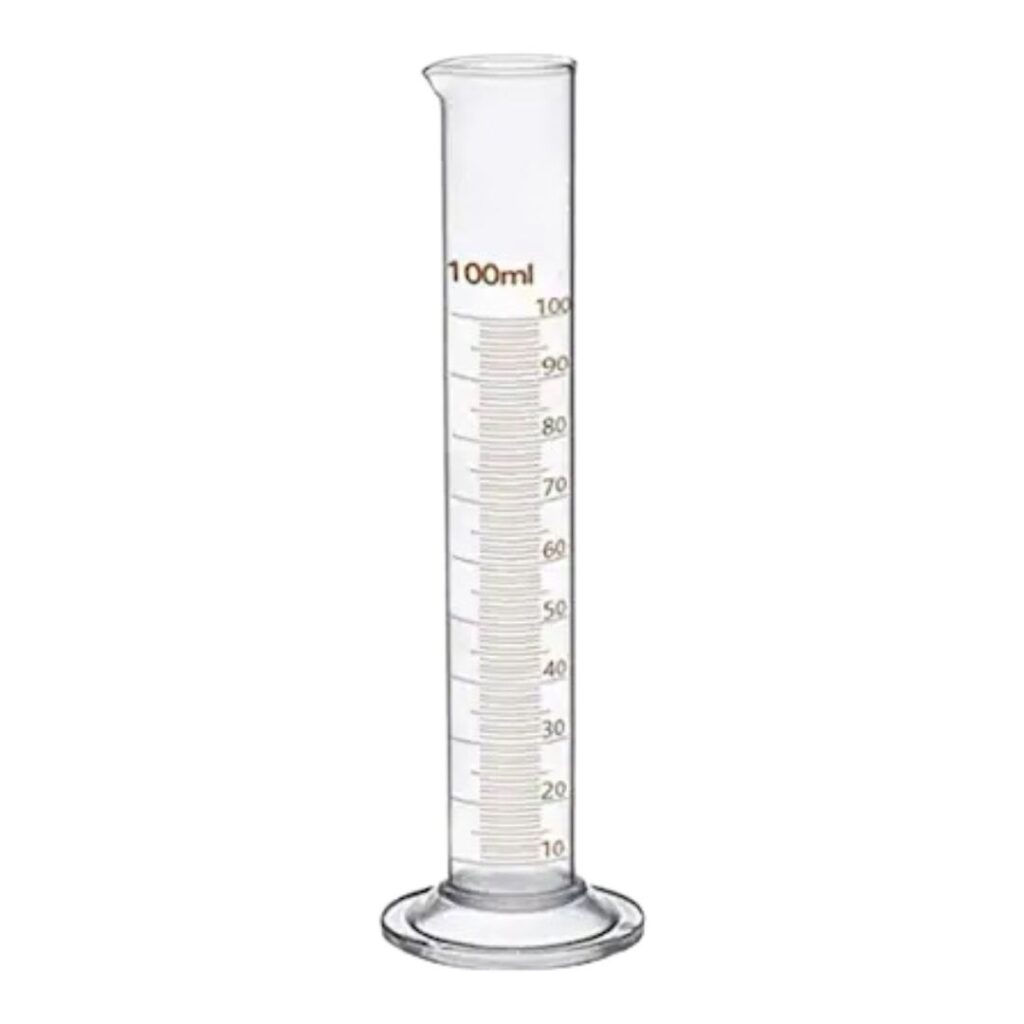
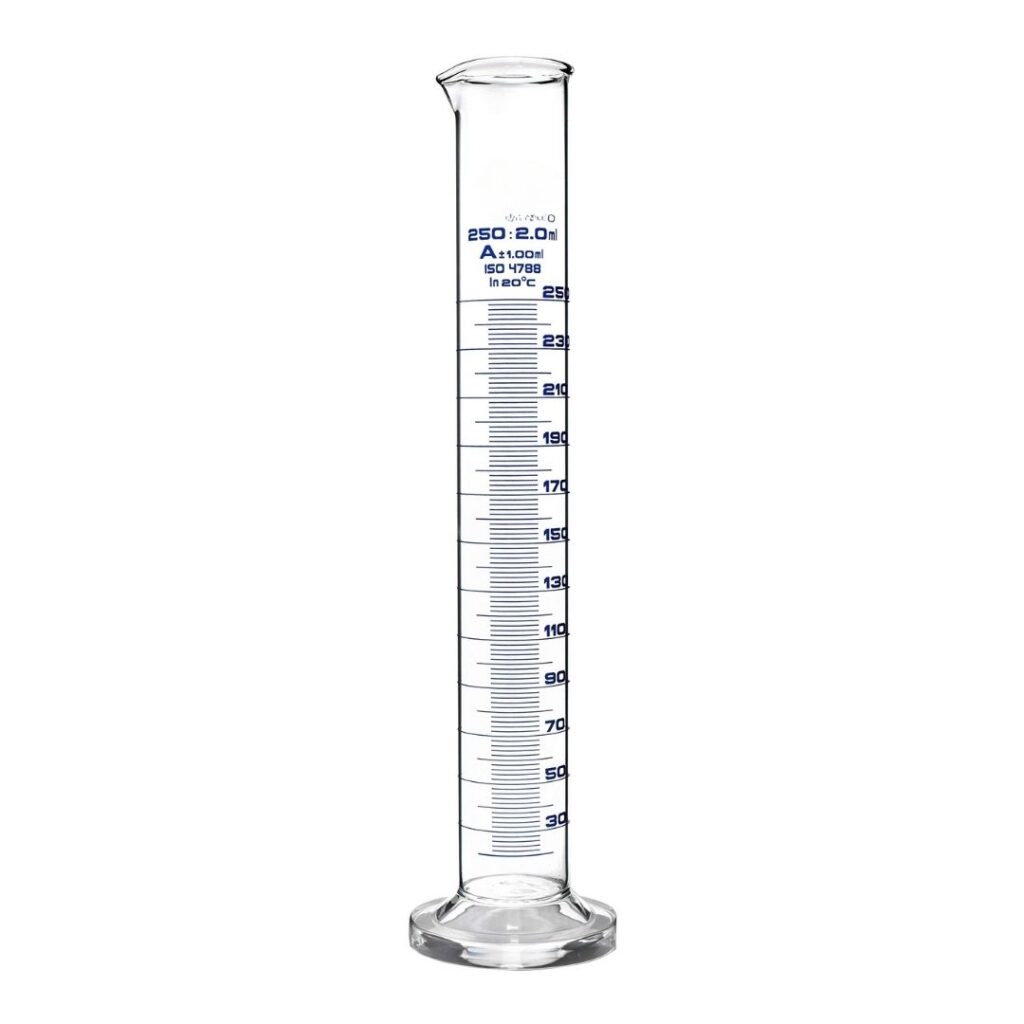
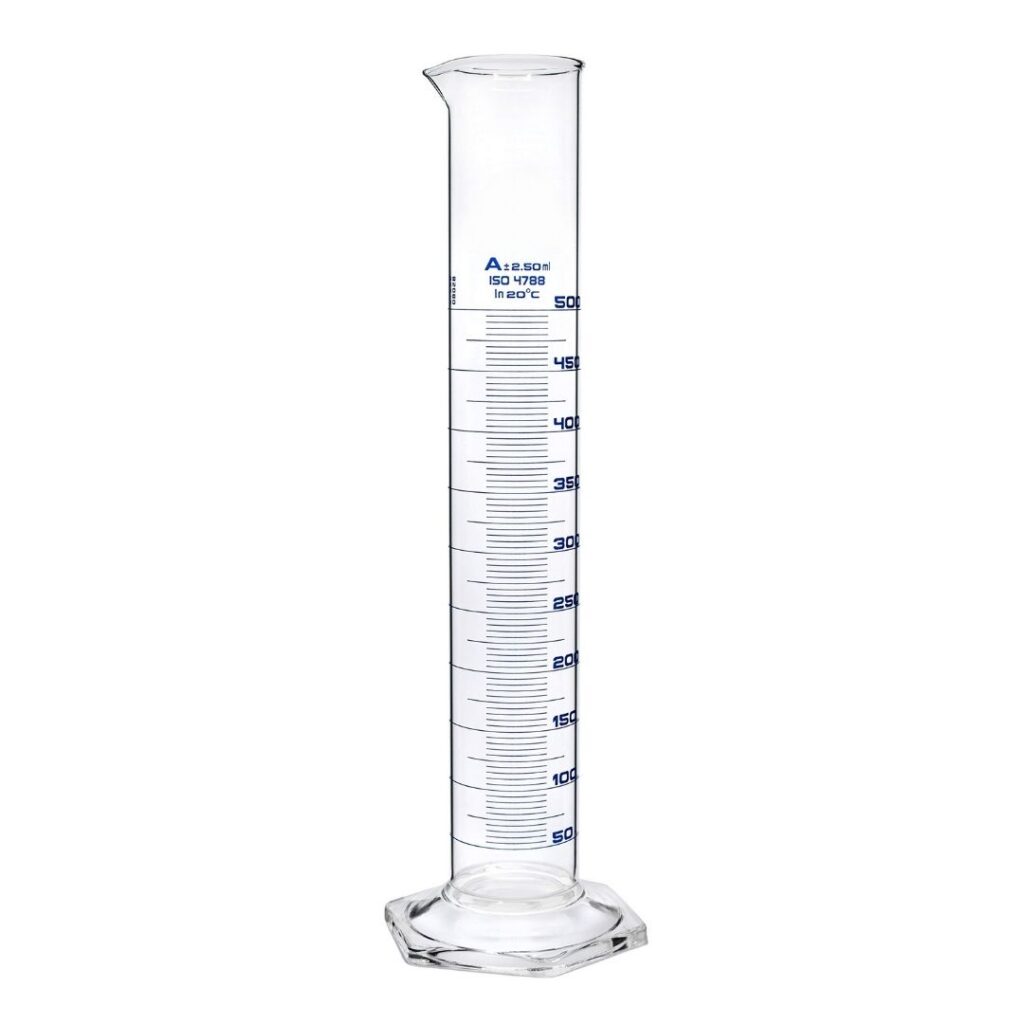









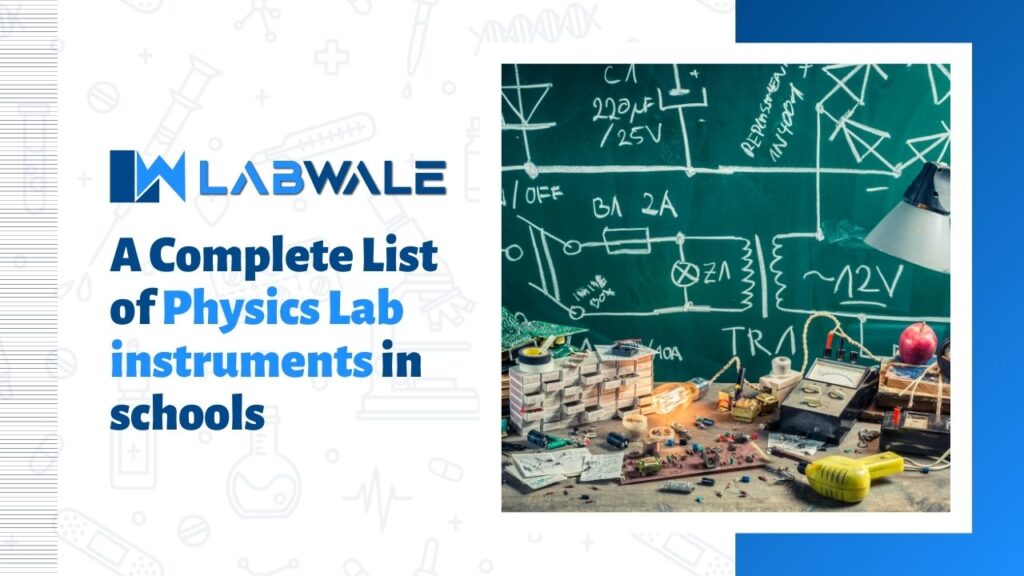
 Cardiology
Cardiology Clinical Oncology
Clinical Oncology






